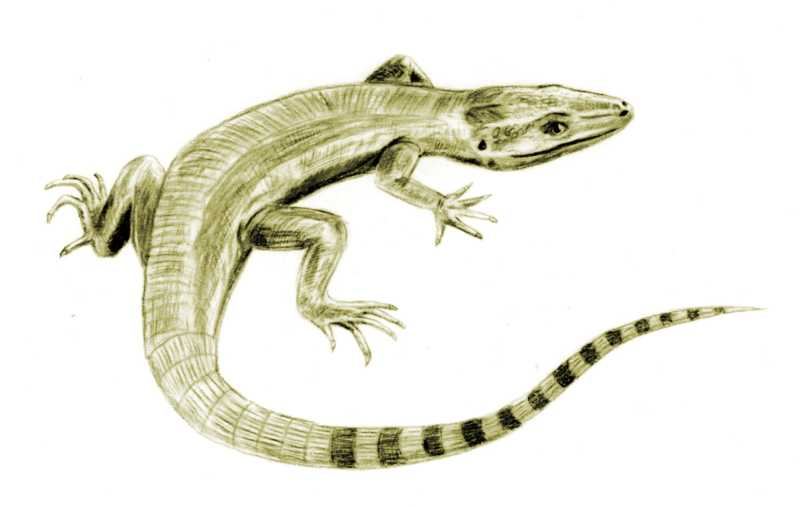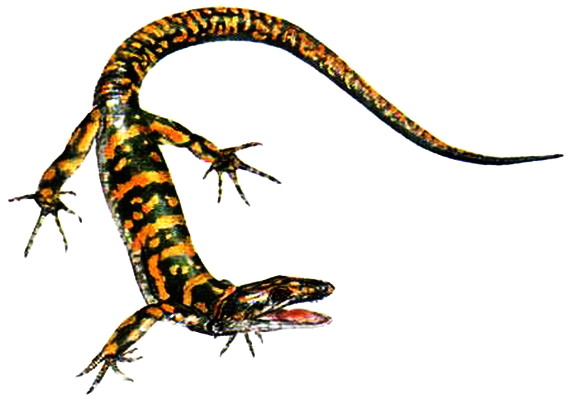[Recent Entries][Archive][Friends][User Info]
Below are 3 entries, after skipping 20 most recent ones in the "Сообщество, посвящённое ра" journal:| October 6th, 2011 | |
|---|---|
| 10:34 pm [industrialterro] [Link] |
Ctenospondylus Ctenospondylus, ("comb vertebra") was a pelycosaur that was about 3 meters (10 feet) long. It lived from Latest Carboniferous to Early Permian. Its fossils were found in the U.S. states of Ohio and Texas. It was a carnivore and preyed upon animals close to its size. Ctenospondylus had a long tail, short back spines, and a very deep yet narrow skull with massive jaws that had sharp teeth. Because of its large size, it was probably the apex predator in its environment, and might have competed with other predators like Dimetrodon for food. A Sphenacodontid, it was a close relative of Dimetrodon. A species has been found in Ohio, along with Dimetrodon, Edaphosaurus, Ophiacodon, and Eryops, according to the latest Fossils of Ohio book.
Tags: Вымершие синапсиды, Карбон, пеликозавры |
| 10:23 pm [industrialterro] [Link] |
Archaeothyris Archaeothyris was a very early mammal-like reptile, which lived in the late Carboniferous period. Dated to 306 million years ago, it is the oldest undisputed synapsid known. (Protoclepsydrops is slightly older, but its status as a synapsid is unclear as the remains are more fragmentary). It was found in Nova Scotia, at the same locality as Hylonomus, and Petrolacosaurus, all of which resemble Archaeothyris. Archaeothyris belonged to the family Ophiacodontidae, a group of early pelycosaurs that evolved early in the Late Carboniferous. It is thus seen as the precursor of all synapsids (which include mammals). Unlike Hylonomus and its kin, Archaeothyris was relatively large, measuring 50 centimetres (20 in) head to tail. It was also more advanced than the early sauropsids, having strong jaws that could open wider than those of the early reptiles. While its sharp teeth were all of the same shape, it did possess a pair of enlarged canines, suggesting that it was a carnivore. Archaeothyris lived in what is now Nova Scotia, about 306 million years ago in the Carboniferous Period (Pennsylvanian). Nova Scotia at this time was a swamp, similar to today's Everglades in Florida. The "trees" (actually giant club mosses) were very tall, some, such as Lepidodendron, up to 50 metres (164 ft) tall. Archaeothyris and the other early amniotes dwelled on the forest ground.
Tags: Вымершие синапсиды, Карбон, пеликозавры |
| 10:11 pm [industrialterro] [Link] |
Aerosaurus Aerosaurus is an extinct genus within Varanopidae, a family of non-mammalian synapsids. It lived from the Late Carboniferous to Early Permian in North America.
Tags: Вымершие синапсиды, Карбон, пеликозавры |













